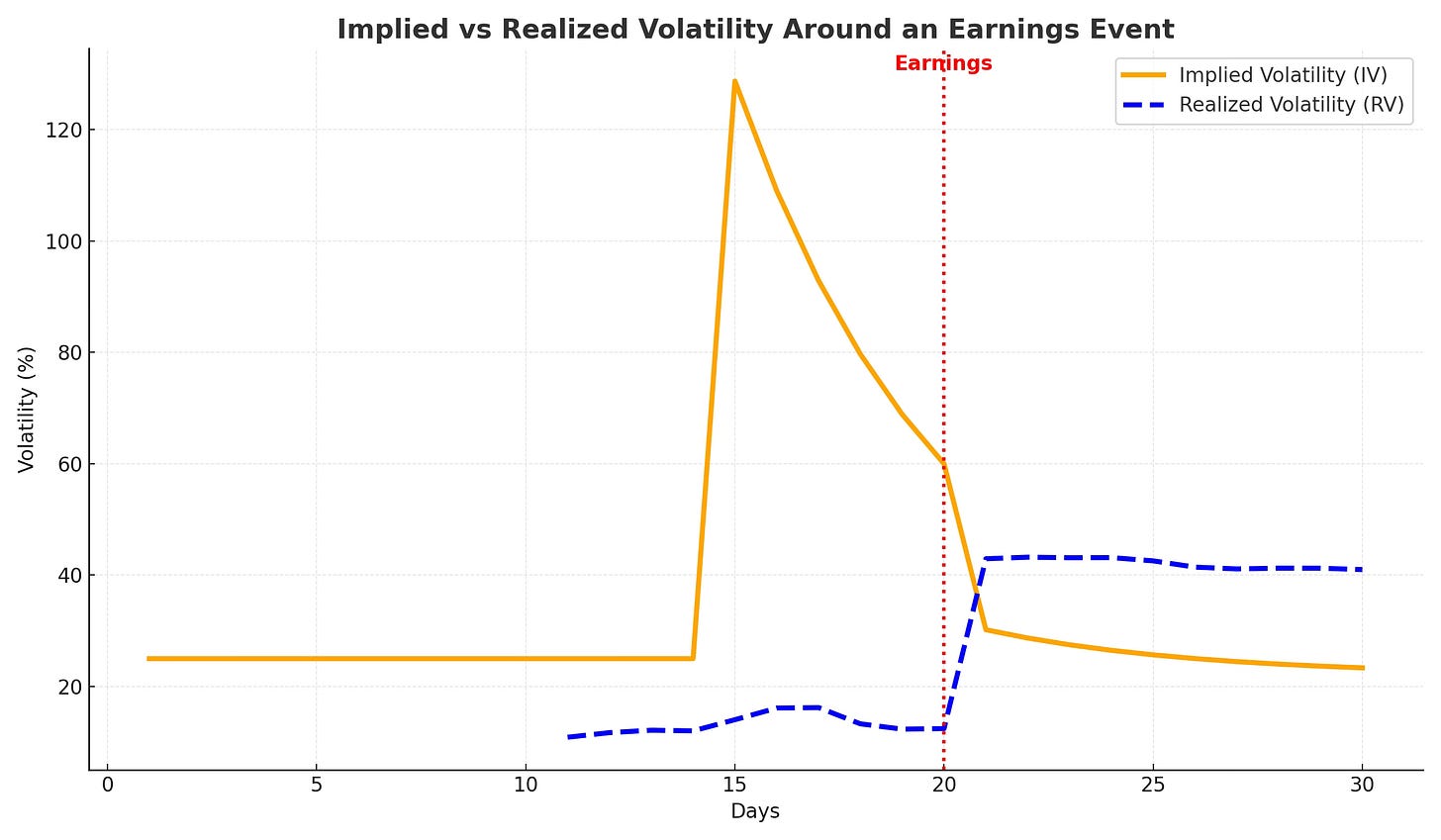Volatility is one of the most critical forces in the financial markets. It not only measures how much prices move, but also drives the value of derivatives, particularly options. Yet not all volatility is the same. Two of the most important — and often misunderstood — measures are implied volatility (IV) and realized volatility (RV).
Understanding the difference between the two is essential for anyone trading options, hedging portfolios, or even just gauging market sentiment.
What Is Realized Volatility?
Realized volatility (RV) is a backward-looking measure. It tells you how volatile an asset actually has been over a specific time period.
Calculated using historical price data (daily returns, intraday moves, etc.).
Expressed as an annualized percentage.
Example: If the S&P 500 moved 1% up and down daily over the past month, the realized volatility might be around 16% annualized.
RV is factual — it shows what has already happened.
What Is Implied Volatility?
Implied volatility (IV) is a forward-looking measure. It reflects the market’s expectation of future volatility, derived from option prices.
Higher option premiums = higher implied volatility.
Lower option premiums = lower implied volatility.
IV doesn’t tell you what will happen — it tells you what the market is pricing in.
Example: If traders expect big moves around an earnings release or a Federal Reserve decision, IV rises even before any move occurs.
Key Differences
Direction in Time
RV: Past movement (what happened).
IV: Future expectation (what might happen).
Source of Information
RV: Historical returns.
IV: Option market pricing.
Nature
RV: Objective, calculated directly from past price data.
IV: Subjective, depends on supply and demand in the options market.
Why the Difference Matters
The spread between implied volatility and realized volatility is at the heart of many trading and risk management strategies:
IV > RV: Options may be overpriced. Traders who sell options (covered calls, iron condors, straddles) can benefit by collecting premium that exceeds actual realized moves.
IV < RV: Options may be underpriced. Buyers of options (long calls/puts, straddles) benefit because the market is underestimating actual movement.
This difference is sometimes called the volatility risk premium.
How It Affects Option Prices
Options are priced using models (like Black-Scholes) where volatility is a key input.
Higher IV → higher option premiums (even if the stock doesn’t move).
Lower IV → cheaper options.
For example:
Before Apple’s earnings, IV may spike because traders expect a big move. Options become expensive even though the stock hasn’t moved yet.
After earnings, IV collapses (“vol crush”) once uncertainty passes, causing option values to fall, sometimes even if the stock moved in the expected direction.
This is why traders who don’t understand volatility often lose money despite “being right” about direction.
Key Takeaways
Realized Volatility (RV): What actually happened.
Implied Volatility (IV): What the market expects to happen.
The gap between IV and RV drives option pricing inefficiencies.
Traders use this difference to decide whether to buy or sell options.
Final Thoughts
For stock traders, volatility may seem like background noise. But for options traders, understanding implied versus realized volatility is non-negotiable.
RV tells you the truth about the past.
IV tells you the story the market is pricing for the future.
The biggest opportunities — and risks — lie in the gap between the two. For beginners, simply tracking IV and RV side by side can sharpen timing, improve strategy selection, and prevent costly mistakes.




